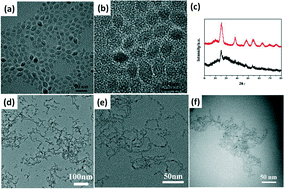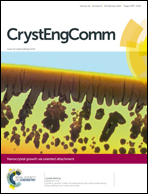Self-assembly of TiO2 nanoparticles into chains, films and honeycomb networks†
Abstract
In recent years, the preparation of nano functional materials with new properties in the way of self-assembly of nanoparticles (NPs) has gradually become a new focus in the nanoscale field. To design and synthesize new nanostructures through the method of self-assembly is quite significant due to the special energy law for the NPs. In our article, we have developed a new and convenient preparation method for TiO2 nanocrystals and obtained one-dimensional (1D), two-dimensional (2D) and three-dimensional (3D) architectures by the self-assembly of TiO2 NPs in the same reaction system. The reaction time, temperature and solvent were controlled to systematically study the growth mechanism of self-assembly. An oriented attachment (OA) mechanism was found to drive the tiny particles into 1D nanochains while the 2D monolayer membrane structure formed on the carbon film is due to a solvent evaporation process. A 3D honeycomb network is formed by the self-assembly of TiO2 NPs on solvent interfaces which is mainly caused by the Marangoni effect. This work aims to provide a solid example for the understanding of the self-assembly of NPs and may contribute to the utilization of assembled structures in potential applications.

- This article is part of the themed collection: Nanocrystal growth via oriented attachment

 Please wait while we load your content...
Please wait while we load your content...